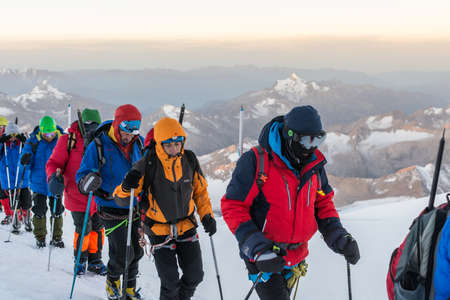Understanding the Unique Challenges of Remote Hiking in the U.S.
Exploring America’s vast wilderness is an adventure that draws hiking groups from all walks of life. However, venturing into remote areas of the United States—whether the Rocky Mountains, deep forests in the Pacific Northwest, or the arid canyons of the Southwest—presents a set of challenges that are both thrilling and potentially dangerous. One of the most significant obstacles is the unpredictable terrain. Trails can shift quickly from well-marked paths to rocky slopes, dense undergrowth, or muddy inclines, increasing the risk of sprains, falls, or even more serious injuries.
Weather in these remote locations can change rapidly and without warning. A sunny day may quickly give way to sudden thunderstorms, extreme heat, or even snow at higher elevations. These shifts not only affect comfort but also dramatically impact safety; hypothermia and heat-related illnesses are genuine concerns far from immediate help. Additionally, hikers are often miles away from the nearest medical facility. In emergencies, this distance means that professional medical attention can be hours—or even days—away, making it crucial for groups to be self-reliant and prepared to manage health crises on their own until help arrives.
Moreover, communication barriers are common in backcountry settings. Cell phone coverage is often nonexistent, leaving satellite devices or radios as the only viable options for reaching emergency services. Navigational errors can also occur, leading groups off trail and compounding any medical issue with the risk of becoming lost. Understanding these unique challenges is essential before heading into America’s wild places, setting the stage for effective response strategies when emergencies arise.
Preparing Your Group: Essential Wilderness Medical Training and Gear
When planning a hiking adventure in the remote backcountry of the United States, preparation is your best defense against unexpected medical emergencies. While enjoying America’s vast national parks and wilderness areas, hikers are often far from immediate medical help. That’s why equipping your group with proper first aid training specifically tailored to wilderness settings—and ensuring you have the right medical gear—can make all the difference.
The Importance of Specialized First Aid Training
Standard first aid knowledge is valuable, but wilderness-specific training goes further. In remote locations, professional help may be hours or even days away. Courses like Wilderness First Aid (WFA) or Wilderness First Responder (WFR) teach practical skills for stabilizing injuries, managing environmental risks, and improvising when resources are limited. Many American outdoor organizations, including REI and the National Outdoor Leadership School (NOLS), offer these programs nationwide. Encouraging every group member to complete such training empowers your team to respond confidently in an emergency.
Must-Have Medical Supplies for Hiking Groups
Having the right gear is just as critical as training. A well-stocked first aid kit should address common hiking injuries such as sprains, cuts, blisters, allergic reactions, and more serious conditions like fractures or hypothermia. It’s smart to divide supplies between personal kits (carried by each hiker) and a comprehensive group kit accessible to all.
Essential Medical Gear Checklist
| Item | Purpose |
|---|---|
| Personal First Aid Kit | For treating minor wounds, blisters, insect bites |
| Group First Aid Kit | Larger supplies for splinting, burns, severe bleeding control |
| Epinephrine Auto-Injector | For severe allergic reactions (anaphylaxis) |
| Thermal Blanket/Bivvy Sack | Treats shock and prevents hypothermia |
| Medical Gloves & Masks | Protects both patient and responder during care |
| CPR Face Shield | Provides safety during rescue breathing |
| Pain Relievers/Antihistamines | Manages pain or allergic symptoms until help arrives |
| SAM Splint/Triangle Bandage | Immobilizes suspected fractures or sprains |
| Duct Tape/Moleskin | Treats blisters or improvises repairs on gear/injuries |
| Tweezers/Tick Key | Removes splinters or ticks common in U.S. woods |
| Emergency Contact Card & Health Info Sheet | Makes responders aware of allergies/medical history |
| Satellite Messenger/PLB (Personal Locator Beacon) | Sends SOS messages and GPS location to rescuers when out of cell range |
| Whistle & Signal Mirror | Aids in attracting attention if lost or injured |
The Role of Communication Devices in Remote U.S. Locations
Cell phone coverage can be spotty or nonexistent in many American wilderness areas. A satellite messenger or Personal Locator Beacon (PLB) offers reliable communication with emergency services anywhere in the country. These devices can send pre-set check-ins to family or dispatch an SOS with your GPS coordinates directly to search-and-rescue teams—a true lifesaver in dire situations.
In summary, taking the time to train your hiking group in wilderness medicine and packing essential first aid and communication tools will prepare you to handle medical emergencies far from help. This proactive approach not only increases safety but also builds confidence for exploring some of America’s most beautiful remote trails.

3. Identifying Medical Emergencies in the Backcountry
When hiking in remote U.S. locations, quick and accurate identification of medical emergencies is crucial. Recognizing the early signs of serious health issues can make a life-or-death difference, especially when professional help is hours away. Here’s how to spot some of the most common urgent conditions on the trail.
Heat Stroke
Heat stroke can occur during strenuous activities in hot climates, such as deserts or sun-exposed trails in national parks like Joshua Tree or the Grand Canyon. Watch for symptoms including confusion, irritability, flushed skin, lack of sweating despite heat, rapid heartbeat, nausea, or even collapse. If a hiker becomes disoriented or stops sweating while feeling hot, act immediately—move them to shade, cool their body with water, and call for help if possible.
Hypothermia
Cold environments like the Rockies or Appalachians pose risks for hypothermia, especially if hikers are wet or exposed to wind. Signs include uncontrollable shivering, slurred speech, clumsiness, and drowsiness. Advanced stages may show paradoxical undressing (removing clothes despite feeling cold). Warm the person with dry layers and insulated shelter, and monitor their breathing closely while seeking emergency assistance.
Severe Allergic Reactions (Anaphylaxis)
Allergies to bee stings, insect bites, or certain plants can cause anaphylaxis—a rapid and potentially fatal reaction. Look for swelling of the face or throat, hives, trouble breathing, dizziness, or vomiting. If you suspect anaphylaxis, use an epinephrine auto-injector (EpiPen) if available and call for emergency evacuation right away.
Fractures and Major Injuries
Slips on rocky terrain or falls from heights can lead to broken bones or severe sprains. Typical signs include visible deformity, inability to move a limb without pain, significant swelling, or bones protruding through the skin (open fracture). Immobilize the injured area using makeshift splints from trekking poles or branches and keep the person still until professional help arrives.
Why Early Recognition Matters
In the American backcountry—where cell service is spotty and rescue teams may take hours to reach you—early recognition allows your group to respond promptly and effectively. By understanding these warning signs and symptoms common in U.S. wilderness areas, your hiking team can prevent emergencies from becoming tragedies and ensure everyone gets home safely.
4. Coordinated Response: Team Communication and Roles
During a medical emergency in remote U.S. hiking locations, a well-coordinated group response is crucial for safety and positive outcomes. Clear protocols for communication, assigning roles, and maintaining composure can make the difference between chaos and effective aid.
Establishing Group Communication Protocols
Communication should be concise, calm, and direct. Before any trip, set a protocol for how emergencies are reported within the group. Use simple language and avoid shouting or panicking. The designated leader or first responder should initiate communication, ensuring everyone understands the situation without causing unnecessary alarm.
Sample Emergency Communication Phrases
| Situation | Phrase Example |
|---|---|
| Medical Emergency Identified | “We have a medical emergency—John is injured.” |
| Requesting Specific Help | “Alex, please get the first aid kit.” |
| Need for Calm | “Everyone stay calm and listen for instructions.” |
| Coordinating with 911/Rescue | “Sam, call 911 and provide our GPS coordinates.” |
Assigning Roles Within the Group
Assigning clear roles helps prevent confusion and ensures that all necessary actions are covered. Roles should be assigned based on group members’ skills and comfort levels ahead of time, if possible. In an emergency, quickly designate:
- Leader/Coordinator: Oversees the response, directs communication, and makes key decisions.
- First Aid Responder: Provides direct care to the injured or ill person.
- Communicator: Handles all outside communications (e.g., calling 911 or using a satellite messenger).
- Navigator/Scout: Prepares for evacuation or guides rescuers to your location if needed.
- Mood Keeper: Helps maintain group morale and calmness.
Example Role Assignment Table
| Role | Main Responsibility | Backup Responsibility |
|---|---|---|
| Leader/Coordinator | Organize overall response | Troubleshoot unexpected issues |
| First Aid Responder | Treat the patient with available resources | Assist with evacuation prep if needed |
| Communicator | Contact emergency services; relay messages to/from group members | Record important details (time, symptoms) |
| Navigator/Scout | Create evacuation route or signal rescuers | Aid with carrying supplies/patient if necessary |
| Mood Keeper | Soothe anxiety; keep everyone focused and calm | Support other roles as needed |
The Importance of Maintaining Calm and Orderly Action
Panic spreads quickly in stressful situations, but a composed approach reassures both the patient and group members. The leader should use measured tones and encourage deep breaths or grounding techniques when tensions rise. Always focus on what you can control—clear communication, decisive action, and teamwork are your best assets in remote emergencies.
Cultural Note: American Hiking Group Dynamics
In the U.S., hiking groups often include people of varying outdoor experience levels. Emphasize inclusivity by making sure everyone knows their role in an emergency plan before you hit the trail. Encourage open dialogue about concerns so that every hiker feels empowered to participate actively in both prevention and response.
An organized, communicative team not only provides better care but also strengthens trust among members—a hallmark of safe outdoor adventures across America’s wild places.
5. Contacting Emergency Services and Navigating Remote Rescue Logistics
When hiking in remote U.S. wilderness areas, cell service is often unreliable or nonexistent, making it crucial for hiking groups to be prepared with alternative communication devices.
Utilizing Satellite Messengers and Personal Locator Beacons (PLBs)
Investing in a satellite messenger or a PLB can be a lifesaver in emergencies. Devices like the Garmin inReach or SPOT allow you to send SOS signals and two-way messages even when off the grid. Before your trip, familiarize yourself with how to activate the emergency function and ensure all group members know who carries the device and how to use it if needed.
Best Practices for Contacting Help
If an emergency occurs, remain calm and activate your satellite messenger’s SOS feature or press your PLB’s emergency button. These devices typically transmit your GPS coordinates directly to rescue services. If your device allows for messaging, clearly state:
- Your exact location (latitude/longitude from your device display)
- The nature of the emergency (injury type, number of people affected)
- Patient status (conscious/unconscious, breathing, bleeding)
- Any immediate threats to safety (weather changes, wildlife)
Conveying Information Clearly
Rescue teams rely on concise and accurate information. Avoid jargon and use simple descriptions: “We are on the north ridge of Mount Rainier, patient has a broken leg, stable but in pain.” If possible, mark your location with bright gear or a signal panel to help rescuers spot you from the air or at a distance.
Staying Accessible During Rescue Operations
Once contact is made, keep your group together and remain where you are unless moving is necessary for safety. Conserve battery life on your communication device by using it only as needed until help arrives. Stay alert for rescue personnel—listen for helicopter sounds or look for search parties—and be ready to signal them.
By understanding these protocols and practicing clear communication, hiking groups can greatly increase their chances of a timely rescue during medical emergencies in America’s vast wilderness.
6. Stabilizing and Supporting the Injured Until Help Arrives
Step-by-Step Methods for Physical Stabilization
When a member of your hiking group is injured in a remote U.S. location, immediate action is crucial. First, assess the environment to ensure it’s safe for both the injured person and other group members—move away from hazards like falling rocks, unstable ground, or wildlife if possible. Next, perform a primary assessment: check for responsiveness, breathing, and serious bleeding. If you suspect a spinal injury, avoid moving the individual unless their life is in immediate danger. Use available first aid supplies to control bleeding with direct pressure, immobilize fractures with splints fashioned from trekking poles or sturdy branches, and apply clean dressings to open wounds. Elevate injured limbs if possible and prevent further injury by keeping the person still and comfortable.
Offering Emotional Support
Medical emergencies can be frightening for both the injured individual and the rest of the group. Designate one or two people to stay with the injured member, offering calm reassurance and clear communication about what’s happening. Make eye contact, speak in a steady voice, and encourage slow, deep breathing to help manage shock or panic. If possible, assign tasks to other group members—such as setting up a shelter or preparing water—to keep everyone engaged and reduce anxiety.
Maintaining Group Safety
While waiting for rescue teams, it’s vital to maintain safety for the entire group. Establish a visible location where rescuers can easily find you; use brightly colored clothing or emergency blankets to signal your position if needed. Monitor weather conditions closely—be prepared to move only if remaining in place poses greater danger (such as incoming storms or wildfires). Maintain hydration and energy levels by rationing food and water appropriately. Keep everyone together to prevent additional accidents or members becoming lost.
Communication with Rescue Teams
If you have cell service or a satellite communicator, provide rescuers with accurate information about your location (using GPS coordinates when possible), the nature of the injuries, and any special needs your group may have. Follow their instructions carefully while continuing to monitor the injured person’s condition.
Aftercare Considerations
Once help arrives, provide responders with detailed information about what happened, what care was given, and any changes in the injured person’s status. After evacuation, support all group members emotionally—debrief together about what went well and areas for improvement. Building these skills not only helps in emergencies but also strengthens trust and resilience within your hiking community.


